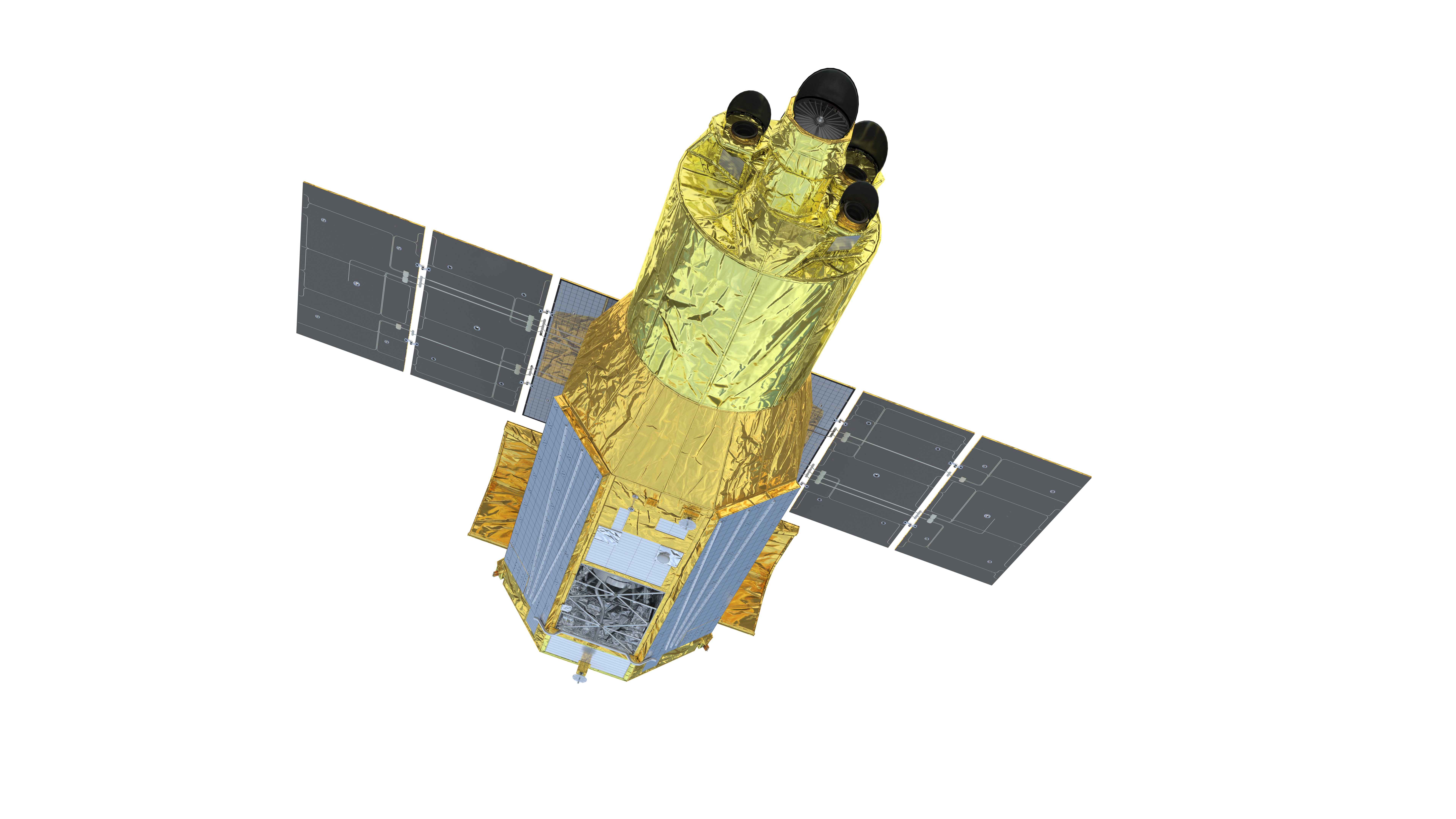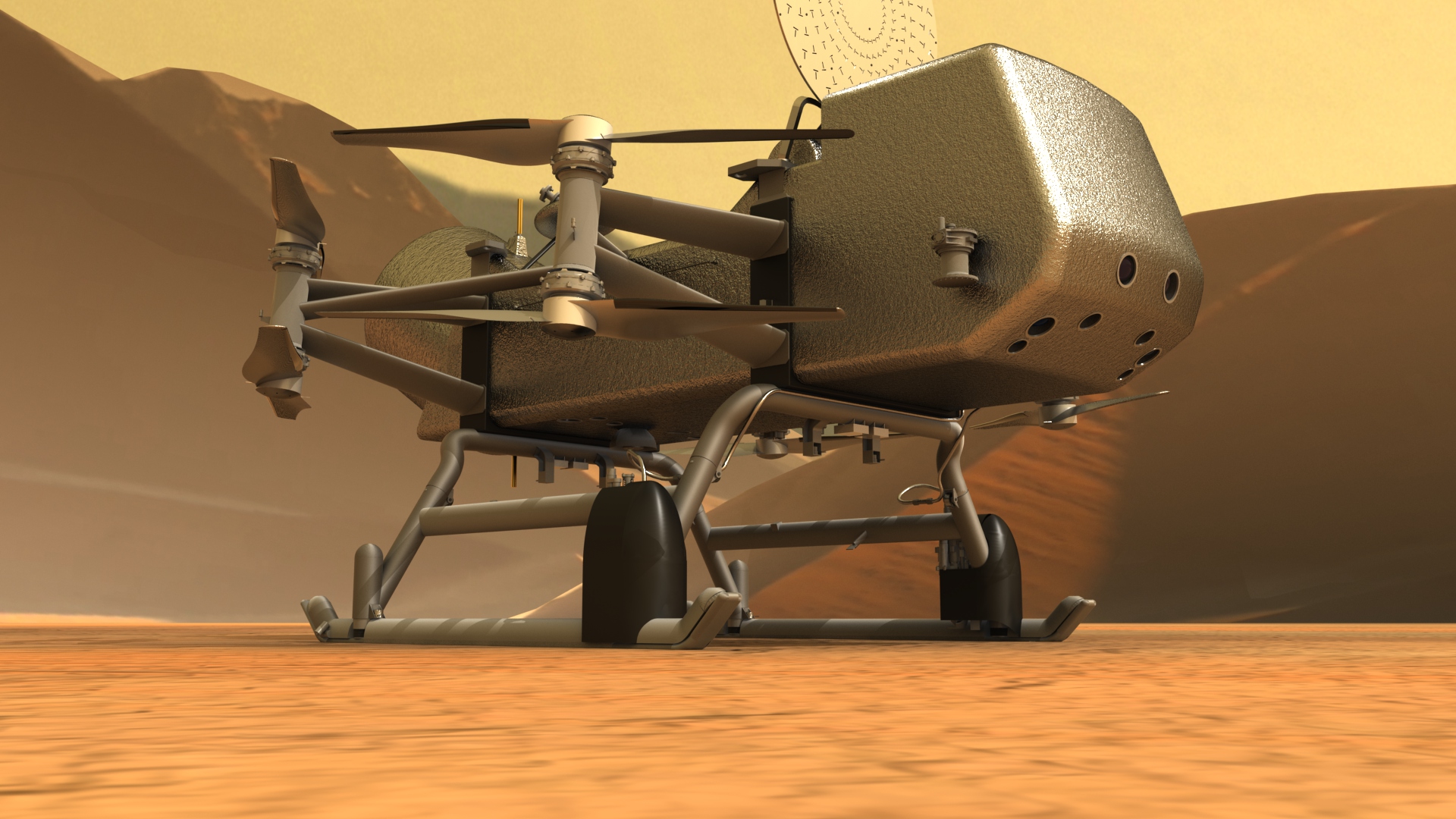Goddard Goings: Insight Into Its Past, Present and Future
 James Webb Space Telescope-“I’m Back in the Saddle Again!” – It’s likely anyone reading this article has heard about the James Webb Space Telescope (JWST). The telescope launched on December 25, 2021 (EST) with much fanfare. Over the next month, it traveled to its observation location at the L2 Lagrange point in the earth-sun gravitational system. It has been sitting comfortably at this saddle point for well over a year. Cooling of the instrument didn’t wait until reaching this point. Oh no, this began shortly after the launch from the spaceport in French Guiana because the majority of the telescope was cooled passively via thermal radiation to outer space.
James Webb Space Telescope-“I’m Back in the Saddle Again!” – It’s likely anyone reading this article has heard about the James Webb Space Telescope (JWST). The telescope launched on December 25, 2021 (EST) with much fanfare. Over the next month, it traveled to its observation location at the L2 Lagrange point in the earth-sun gravitational system. It has been sitting comfortably at this saddle point for well over a year. Cooling of the instrument didn’t wait until reaching this point. Oh no, this began shortly after the launch from the spaceport in French Guiana because the majority of the telescope was cooled passively via thermal radiation to outer space.
By the time JWST reached L2, the coldest part of the observatory was near its ultimate temperature of 30 K. However, the most cryogenic of all instruments on the telescope—the Mid-Infrared Instrument (MIRI)—had only cooled to 155 K. Cooldown to reach the rest of the observatory took another 70 days or so. This slow cooldown was intentional for a variety of reasons. “The cooldown duration and sequencing happened almost exactly to plan, which enabled efficient scheduling of the deployment tasks and ensured the cleanliness of the optics by preventing water and molecular contamination transport,” states Brian Comber, a key thermal engineer on the mission.
The thermal model of the telescope was quite accurate. According to Shaun Thomson, the thermal engineering lead for JWST at Goddard Space Flight Center (GSFC), “The time to complete cooldown was only two days longer than predicted (162 vs 160 days).” He goes on to say, “At final steady-state condition, 96% (three-sigma) of all temperature sensors fell within the confidence interval of predicted temperatures.” Shaun sums up how well the cooldown of the instrument went: “We staffed to be ready for any contingencies or deviations which may have arisen and that would have pulled off people, potentially leaving us unable to properly monitor the observatory. However, things went so well to plan that we were able to reduce the number of staff. Hard to add people, easy to release people.” Brian’s summation is a little more colloquial: “We planned for things to go wrong and to need more thermal engineers, but we ended up just watching paint dry by the second half of the cooldown.”
About 100 days after launch, the MIRI cooler reached its steady-state operating temperature. MIRI is unique among the instruments on the telescope since it needs to operate near 6 K to achieve its required sensitivity. The whole of the Integrated Science Instrument Module (ISIM) resides near 40 K, and a multistage pulse tube cooler provides the initial cooling below this while a Joule-Thomson cooler completes the task. Regarding performance of the MIRI cooling system, I’ll let Kimberly Banks, the GSFC MIRI cryocooler systems engineering lead, have the final say: “A little over a year later and the cryocooler is matching its initial on-orbit performance baseline, allowing MIRI and JWST to continue its amazing science discoveries.” Enough said.
 X-ray Imaging and Spectroscopy Mission-“She packed my bags last night, pre-flight. Zero-hour 9 AM.” – The satellite that is the X-ray Imaging and Spectroscopy Mission (XRISM) is waiting to be tucked away in the fairing of an H-IIA rocket at the Tanegashima Space Center on the southeast coast of Tanegashima Island, Japan. XRISM is comprised of two X-ray instruments, the Resolve spectrometer and the Xtend CCD wide-field imager. This mission is a multi-national collaboration with major inputs from ESA, JAXA, and NASA.
X-ray Imaging and Spectroscopy Mission-“She packed my bags last night, pre-flight. Zero-hour 9 AM.” – The satellite that is the X-ray Imaging and Spectroscopy Mission (XRISM) is waiting to be tucked away in the fairing of an H-IIA rocket at the Tanegashima Space Center on the southeast coast of Tanegashima Island, Japan. XRISM is comprised of two X-ray instruments, the Resolve spectrometer and the Xtend CCD wide-field imager. This mission is a multi-national collaboration with major inputs from ESA, JAXA, and NASA.
NASA Goddard contributed the Resolve instrument since the microcalorimeter inside was developed here. It also needs to be cooled to 0.050 K to achieve the sensitivity necessary to detect single soft X-ray photons. This ultralow temperature is provided by a multistage adiabatic demagnetization refrigerator, known colloquially as an ADR. GSFC is a world leader in the design, production and testing of spaceflight ADRs. So the marriage of these two technologies at Goddard is perfect.
The Resolve instrument saw more than ten test campaigns that, when added up, total many months of detector operation at 0.050 K. “Its performance is even better than the precursor, the Soft X-ray Spectrometer on Hitomi.” states Michael DiPirro, cryogenics subject-matter expert on XRISM. It also saw vibration tests at the instrument, cryogenic dewar and spacecraft levels of assembly. This testing spanned two continents and a global pandemic; it was not painless. Mike again adds: “We made it through a very harrowing time of finding and fixing a low temperature leak during the height of COVID. Teamwork, logistical support and remote access kept us going through this one -year-plus critical period from March 2020 through April 2021.”
There is one more round of pre-flight checks and tests before the satellite is loaded into the fairing of the rocket. After that, the long-anticipated launch will occur in late August 2023. Safe Travels, XRISM!
 Dragonfly-“Fly me to the moon ...” – Dragonfly, a collaboration between NASA GSFC and Johns Hopkins Applied Physics Laboratory, aims to put a rotorcraft on Titan, Saturn's largest moon. After the craft touches down, it will fly from one location to another, sampling the atmosphere and surface land and seas. This is the first time a science vehicle will fly the entire payload from location to location on another world as it gathers data.
Dragonfly-“Fly me to the moon ...” – Dragonfly, a collaboration between NASA GSFC and Johns Hopkins Applied Physics Laboratory, aims to put a rotorcraft on Titan, Saturn's largest moon. After the craft touches down, it will fly from one location to another, sampling the atmosphere and surface land and seas. This is the first time a science vehicle will fly the entire payload from location to location on another world as it gathers data.
The Dragonfly Mass Spectrometer (DraMS) is currently being developed to identify different kinds of organic material that comprise Titan's surface. The cryogenic engineering team on DraMS is developing an interface between the room temperature rotorcraft body and the near-cryogenic temperatures of an onboard sample chamber, while minimizing the thermal leak to the Titan environment. Pete Barfknecht (GSFC), the cryogenic lead on DraMS, sums it up this way: “The Wonderwall has a bunch of conflicting requirements that have pushed the design to the edges of what's physically possible to manufacture. We’re using a lot of 3D printing to make ultralight, dimensionally stable structures while still being able to dump excess heat overboard.” This hasn't been easy. “Typically, cryogenic experiments are done in a vacuum environment to avoid convective parasitic heat loads. Operating on Titan gives us the challenge of working in a pressure environment that is 1.5 times that of Earth at 1/7th the gravity along with the difficulty of having to simulate these conditions here on Earth,” continues Richard Ottens (GFSC), deputy cryogenic lead on DraMS.
Other instruments aboard Dragonfly include: DraGNS, a gamma-ray and neutron spectrometer to help identify surface composition; DraGMet, a suite of geophysical and meteorological sensors; and DragonCam, a camera that will image Titan’s terrain and help guide navigation of the craft. Currently, engineering models of the instruments are being developed alongside the finalization of the rotorcraft design. Dragonfly has a scheduled launch date in 2027 and a touchdown on Titan in 2034.
Cryogenic spaceflight missions are not Goddard’s only focus. In fact, you will find a feature article about the Roman Space Telescope in this very issue. Check it out, and thanks for reading!
Image: The slow cooldown of JWST’s MIRI was intentional because it enabled efficient scheduling of the deployment tasks and ensured the cleanliness of the optics by preventing water and molecular contamination transport. Credit: NASA GSFC
Image 2: After one final round of pre-flight checks and tests, the XRISM satellite will be loaded into the fairing of the rocket; the long-anticipated launch occurs in late August 2023. Credit: NASA GSFC
Image 3: Figure 1: Cartoon representation of oxygen liquefaction test system. Figure 1: Cartoon representation of oxygen liquefaction test system. Credit: NASA



